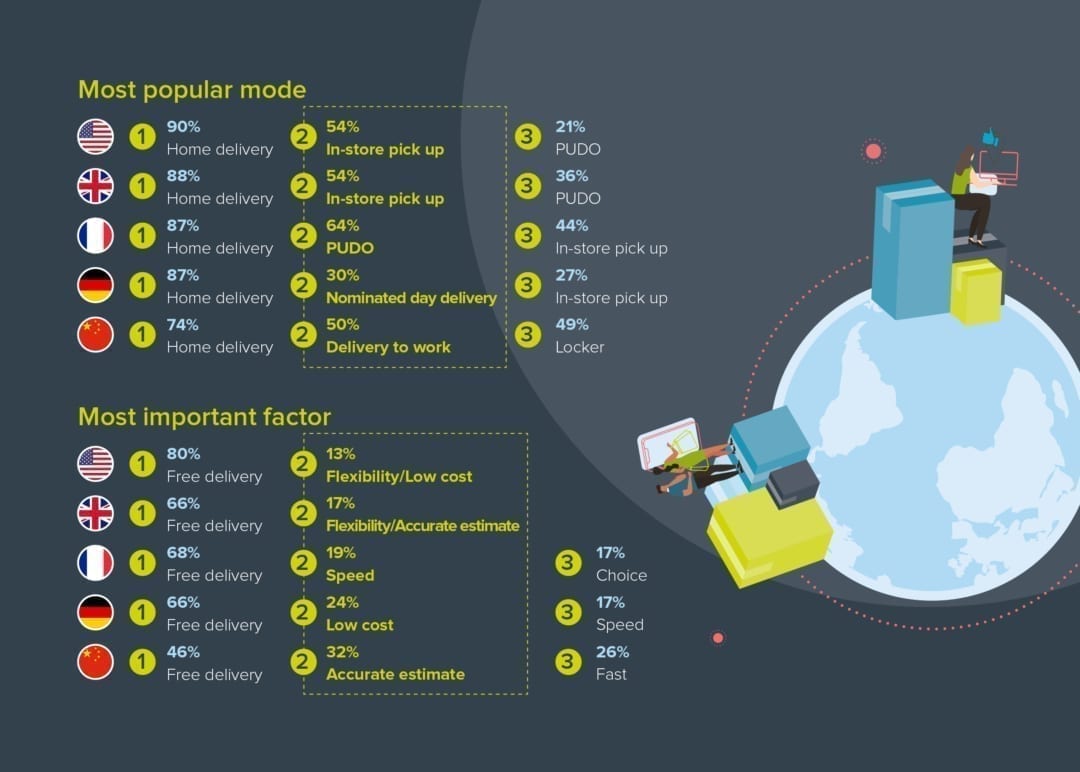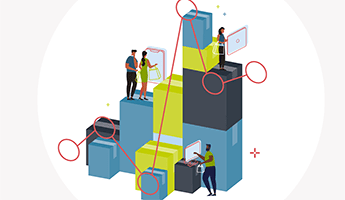
Ecommerce has been running at peak levels since May. Supply lines have struggled to keep up and delays have ensued – leaving behind a trail of broken customer promises. Meanwhile, actual peak season is coming, and our analysis suggests this one will be bigger than ever.
Peak season isn’t the only factor that’s fueling demand, either. As more shoppers head online, many retailers have seen their reach become global overnight. This is an exciting prospect, especially if you’re looking to recover lost offline sales. And yet, there are several factors that can deter international consumers if brands don’t play their cards right.
In short, opportunities abound in retail right now, but unless you can put the right tactics in place to properly capitalize on demand, the rewards will stay out of reach. These are the steps you must take now to build the automation, intelligence, and partner ecosystems you need to fully capture this unprecedented opportunity.
Build the right carrier ecosystem
Many enterprise retailers continue to rely solely on one or two carriers. This is a huge risk going into peak season, when suppliers quickly reach capacity. And it is also a barrier to international expansion, as it typically limits retailers to a specific geographical footprint.
Carrier integrators with a strong network in your target markets will instantly increase your carrier availability – especially during busy periods. Selecting an integrator with a global library can also enable automatic allocation to the fastest, most cost-efficient delivery method for international customers. This helps alleviate the time and effort involved in managing bespoke integrations all over the world – a hassle that leaves many brands cold at the prospect of international expansion.
Adapt to serve new markets
Despite the allure of international markets, there are several factors that deter consumers from shopping with overseas brands. Our analysis shows that 46% of consumers are put off by international shipping, which they perceive as expensive, while 28% say slow delivery is a barrier for them.
What’s more, the delivery options that are most convenient for one geographical market aren’t necessarily the best fit for another. Home delivery is a popular way to receive parcels around the globe, but beyond this consistent first choice, opinion is divided. In the US and the UK, in-store pickup is the next most popular choice (54%), whereas in France it’s PUDO collection (64%). In Germany, nominated day delivery is the next favoured (30%), while in China it’s lockers (49%).

In the All-Delivery Era, retailers that wish to expand across borders must find a way to optimize the post-purchase experience despite the additional complications of international shipping.
Flex your supply chain
Scaling your fulfilment operations can quickly become a drain on resources – especially if your team is tasked with manually processing activities like carrier allocations or international shipping documentation.
Retailers with intelligent infrastructure can automate these processes to scale more efficiently as they expand into new markets. At the same time, these capabilities also allow brands to build personalization into the front-end to cater to different delivery preferences all over the world.
The All-Delivery Era has arrived, and brands must ensure they can scale their fulfilment to meet demand. If international expansion is a priority for you, then your experience must also be scalable across borders. When ecommerce is the only way to connect with consumers, it’s the experience beyond the buy button that will determine whether you grow your customers… or lose them.
Find out more about the All-Delivery Era, and how you can scale your supply chain to take advantage of the demand. Download the Metapack eCommerce Delivery Benchmark Report 2020.
